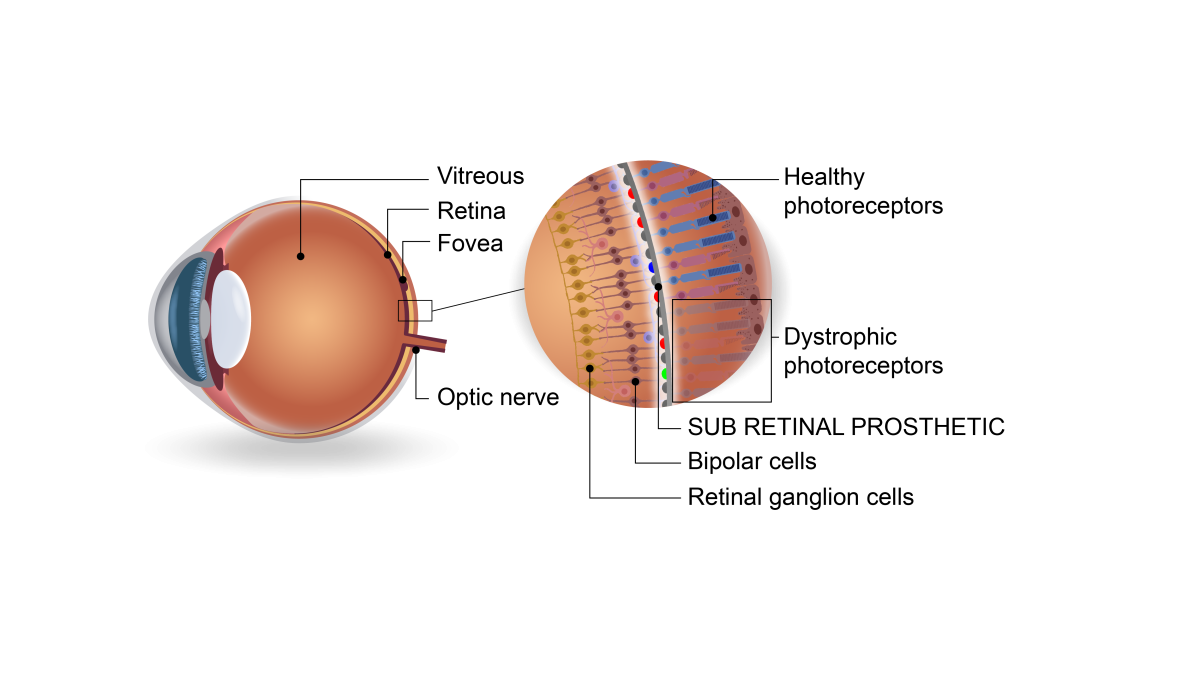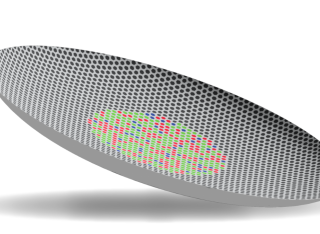
Dr Leslie Askew BSc (Hons), PhD
About
My research project
A feasibility study of conjugated semiconductors for a retinal prosthetic: Bridging the gap between technology and retinal dystophiesMillions suffer severe vision loss due to aging or genetics. Current artificial prosthetics, still evolving, provide only restricted monochromatic vision, leaning heavily on external components. We are working on a flexible, biocompatible device offering full-colour vision that directly stimulates retinal neurons. To date, we have characterised a range of suitable materials and developed a full suite of photonic measurement equipment to quantify the spectral output and electrical efficiencies.
Supervisors
Millions suffer severe vision loss due to aging or genetics. Current artificial prosthetics, still evolving, provide only restricted monochromatic vision, leaning heavily on external components. We are working on a flexible, biocompatible device offering full-colour vision that directly stimulates retinal neurons. To date, we have characterised a range of suitable materials and developed a full suite of photonic measurement equipment to quantify the spectral output and electrical efficiencies.
My qualifications
My recent work

Full colour retinal prosthetic proposed implantation schematic
News
In the media
ResearchResearch interests
- Optoelectronic neural stimulation
- Conjugated polymers and small molecules
- Kelvin probe
Research interests
- Optoelectronic neural stimulation
- Conjugated polymers and small molecules
- Kelvin probe
Publications
Two conjugated polymers with absorption spectra like that of human short-wavelength photoreceptors, or blue cones, are characterised to act as essential components of a sub-retinal flexible prototype prothesis for people suffering from retinal disease affecting photoreceptor cells. Spectrophotometric and transient tests undertaken in unbiased photovoltaic mode in ambient conditions demonstrate that the addition of hole-blocking ZnO layer results in reliably forcing a favourable capacitive charging regime and acts to improve the photoresponse over ten times in one polymer and 45 times in another. We report that the addition of fullerene and non-fullerene acceptor molecules in bulk-heterojunction (BHJ)-active layers make an almost sevenfold measured improvement to extracellular photovoltage for devices operating in an electrolyte environment.
With growing interest in organic phototransistors, as not only sensors but also neuromorphic computing elements, the vast majority of research investigates structures comprising Ohmic source/drain contacts. Here, it is shown how source-gated transistors (SGTs), in which a source contact barrier dominates electrical characteristics, can be implemented as phototransistors. Organic photo-SGTs (OPSGTs) based on vacuum-processed small-molecule dinaphtho[2,3-b:2′,3′-f]thieno[3,2-]thiophene (DNTT) demonstrate low saturation voltage, exceptional tolerance to channel length variation, and photo-to-dark current ratio (PDCR) peaks over 106 for 819 µW broad spectrum incident light power. At zero gate-source voltage, the PDCR reaches 104, showing promise for simple sensor circuit implementation in medical and wellbeing applications.
We report the first implementation of a complementary circuit using thin-film source-gated transistors (SGTs). The n-channel and p-channel SGTs were fabricated using the inorganic and organic semiconductors amorphous InGaZnO (IGZO) and dinaphtho[2,3-b:2′,3′-f]thieno[3,2-b]thiophene (DNTT), respectively. The SGTs exhibit flat output characteristics and early saturation (dVDSAT/dVGS = 0.2 and 0.3, respectively), even in the absence of lateral field-relief structures, thanks to the rectifying source contacts realized with Pt and Ni, respectively. Hence, the complementary inverter shows excellent small-signal gain of 368 V V−1 and noise margin exceeding 94% of the theoretical maximum. We show that the trip point of such inverters can be tuned optically, with interesting applications in compact detectors and sensors. Numerical simulation, using Silvaco ATLAS, reveals that optimized and monolithically-integrated SGT-based complementary inverters may reach a small-signal gain over 9000 V V−1, making them highly suited to low and moderate speed digital thin-film applications. This proof-of-concept demonstration provides encouraging results for further integration and circuit level optimizations.
Solid-state electrolytes have emerged as the grail for safe and energy-dense Li metal batteries but still face significant challenges of Li dendrite propagation and interfacial incompatibility. In this work, an interface engineering approach is applied to introduce an electronic rectifying interphase between the solid-state electrolyte and Li metal anode. The rectifying behaviour restrains electron infiltration into the electrolyte, resulting in effective dendrite reduction. This interphase consists of a p-Si/n-TiO2 junction and an external Al layer, created using a multi-step sputter deposition technique on the surface of garnet pellets. The electronic rectifying behaviour is investigated via the asymmetric I–V responses of on-chip devices and further confirmed via the one-order of magnitude lower current response by electronic conductivity measurements on the pellets. The Al layer contributes to interface compatibility, which is verified from the lithiophilic surface and reduced interfacial impedance. Electrochemical measurements via Li symmetric cells show a significantly improved lifetime from dozens of hours to over two months. The reduction of the Li dendrite propagation behaviour is observed through 3D reconstructed morphologies of the solid-state electrolyte by X-ray computed tomography.
Opto-stimulation of semiconductor-biointerfaces provides efficient pathways towards eliciting neural activity through selective spectral excitation. In visual prosthesis, tri-colour stimulation capability is the key to restoring full-colour vision. Here we report on investigation of organic photoactive π-conjugated donor–acceptor small molecules based on triphenylamine whose absorption spectra are similar to those of the photoreceptors of the human eye. Photoactive device fabrication and characterisation towards full colour, pixelated retinal prosthesis based on inkjet printing of these molecules is demonstrated, with round pixels reaching 25 microns in diameter. Photo-response is studied via interfacing with biological electrolyte solution and using long-pulse, narrow-band excitation. Both photo-voltage and photo-current responses in the devices with a ZnO hole-blocking interlayer show clear signatures of capacitive charging at the electrolyte/device interface, also demonstrating spectral selectivity comparable to that of human eye’ cones and rods.
